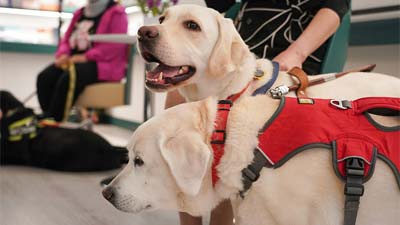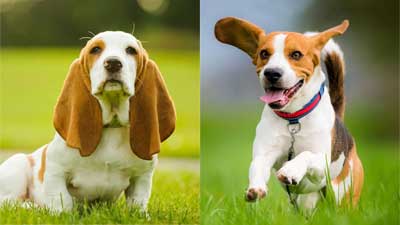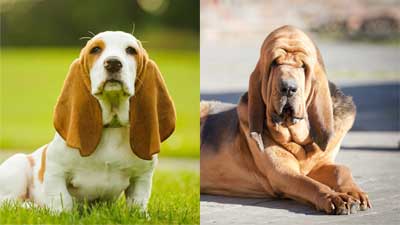- Size
- Smallest
- Small
- Small to Medium
- Medium
- Large
- Giant
- Characteristics
- Smartest
- Hypoallergenic
- Fluffy
- Best Guard
- Best Family
- Best for Kids
- Low Shedding
- Healthiest
- Police Dogs
- Most Calm
- Quietest
- Color
- White
- Black
- Grey
- Brown
- Blue
- Red
- Coat
- Hairless
- Short
- Long
- Origin
- Japan
- China
- Australia
- Germany
- Italy
- United States
- France
- Group
- Hound
- Terrier
- Herding
- Toy
- Working
- Sporting
The Reasons Why Some Dogs' Ears Flop Forward

Photo by Jaspal Kahlon on Unsplash
Dogs, with their diverse breeds and distinctive traits, never fail to capture our hearts with their endearing quirks. One such charming feature that many dog owners have observed is the adorable flop of their canine companions' ears. Whether it's a playful Labradoodle, a majestic Afghan Hound, or a spirited Cocker Spaniel, the phenomenon of ears flopping forward is a common sight.
In this article, we delve into the intriguing world of canine anatomy and genetics to unravel the mystery behind why dogs' ears often flop forward.
Anatomy of Dog Ears
Before we dive into the reasons behind floppy ears, it's important to understand the anatomy of dog ears. A dog's ear is composed of several parts: the pinna (also known as the ear flap), the ear canal, and the inner ear. The pinna is the visible part of the ear that we typically associate with a dog's ear shape. It is made up of cartilage covered with skin and has the ability to move and change shape to some extent.
Genetics and Breeds
The most significant factor that determines whether a dog's ears will flop forward or stand upright is genetics. Ear shape is largely determined by the presence or absence of a specific gene. Breeds with pricked or erect ears, such as German Shepherds or Huskies, have a genetic predisposition for standing ears due to the way the cartilage forms during development.
On the other hand, breeds with floppy or drop ears, such as Basset Hounds or Cocker Spaniels, have a different genetic variation that results in ears that hang down. This variation affects the way the cartilage forms and creates a different ear structure.
However, it's important to note that not all dogs within a breed will have the same ear shape. Genetic variation can lead to some individuals within a breed having floppy ears while others have erect ears. In some cases, even within litters of puppies, there can be variations in ear shape.
Age and Ear Development
In addition to genetics, age also plays a role in the development of a dog's ears. Puppies are born with floppy ears regardless of their breed. As they grow, the cartilage in their ears begins to strengthen and firm up. This process usually happens around 6 to 8 weeks of age, although it can vary depending on the individual dog.
During this growth period, puppies' ears may go through various stages of floppiness or stiffness. Some puppies may have one ear that stands up while the other flops, creating a comical appearance. Eventually, as the cartilage matures and strengthens, the ears will either stand upright or continue to flop forward.
This process may take several months, and it's not uncommon for a dog's ears to continue to change shape until they reach adulthood. So, if you have a puppy with floppy ears, don't be too quick to assume they will always stay that way.
Health Issues and Floppy Ears
While genetics and age are the primary factors in determining ear shape, some health issues can also play a role in dogs having floppy ears. Certain medical conditions can affect the integrity of the cartilage, causing the ears to flop forward even in breeds that would typically have erect ears.
One such condition is called "congenital auricular cartilage malformation," which results in weakened or abnormal cartilage development. Dogs with this condition may have floppy ears that are more prone to infections or other ear-related issues. If you suspect that your dog's floppy ears are due to a health issue, it's best to consult with your veterinarian for a proper diagnosis and treatment plan.
Behavioral and Psychological Factors
Beyond the physical aspects, there may also be behavioral and psychological reasons why some dogs' ears flop forward. Dogs are highly sensitive animals that use their ears to communicate and express their emotions. A dog's posture, including the positioning of its ears, can convey a lot of information about its current state of mind.
In certain situations, a dog may intentionally lower or flop its ears forward as a submissive or fearful gesture. This behavior is often seen when a dog is feeling anxious, uncertain, or stressed. By flopping their ears forward, dogs can appear less threatening to other dogs or humans, signaling their intention to avoid conflict.
It's important to note that a dog's ear position should be considered in conjunction with other body language signals to accurately interpret their emotions. Flopped ears alone may not always indicate fear or submission, as some dogs naturally have ears that naturally fall forward in a relaxed position.
Caring for Dogs with Floppy Ears
For dogs with floppy ears, there are specific care considerations that owners should be aware of. Since floppy ears can create a warm and moist environment, they are more prone to various ear problems such as infections, ear mites, and accumulation of debris.
It's crucial to regularly clean and inspect your dog's ears to ensure they remain healthy. This involves gently wiping the outer part of the ear flap and checking for any signs of redness, swelling, discharge, or unpleasant odor. If you notice any abnormalities, consult with your vet for proper diagnosis and treatment.
Additionally, dogs with floppy ears may benefit from regular grooming to prevent tangling and matting of the ear hair. Trimming the hair around the ear can help improve airflow and reduce the risk of ear infections. However, it's essential to approach ear grooming with caution to avoid accidentally injuring the delicate structures within the ear.
Embracing Floppy-Eared Dogs
While we may have a preference for certain ear shapes or find floppy ears particularly endearing, it's crucial to remember that ear shape doesn't define a dog's worth or personality. Floppy-eared dogs can be just as loving, intelligent, and loyal as those with standing ears.
In fact, floppy ears can add an extra dose of charm to a dog's appearance. They lend a soft and gentle expression to their faces, making them even more irresistible to cuddle and adore.
So, whether your dog's ears flop forward, stand upright, or hang down, embrace their unique ear shape as part of their individuality. Focus on providing them with love, care, and a supportive environment to thrive in.
Conclusion
While genetics and age are pivotal factors influencing ear shape, it's crucial to recognize that health issues, behavior, and psychological factors also contribute to this charming trait. Understanding the multifaceted reasons behind floppy-eared dogs not only adds to our fascination but also holds significance for their overall health and well-being.
As we celebrate the rich diversity of dog breeds, let us remain committed to cherishing and caring for these enchanting creatures, regardless of the orientation of their ears. Providing the right care and attention ensures that our furry friends enjoy a comfortable and fulfilling life, embracing their individuality with floppy ears and all.
You May Also Like
 Breed ReviewsUnveiling the Debate: Cropped Ears vs. Natural Ears in Dogs
Breed ReviewsUnveiling the Debate: Cropped Ears vs. Natural Ears in Dogs Dog BreedsA Compact Hunter: 6 Small Dog Breeds That Are Wirehaired
Dog BreedsA Compact Hunter: 6 Small Dog Breeds That Are Wirehaired Dog BreedsBreed Guide: Choosing the Best Service Dog Breeds
Dog BreedsBreed Guide: Choosing the Best Service Dog Breeds Best Hunting Dogs10 Dog Breeds That Make The Best Hunting Companions
Best Hunting Dogs10 Dog Breeds That Make The Best Hunting Companions Breed ComparisonBasset Hound vs. Beagle: What's the Difference?
Breed ComparisonBasset Hound vs. Beagle: What's the Difference? Breed ComparisonBasset Hound vs. Bloodhound: What's the Difference?
Breed ComparisonBasset Hound vs. Bloodhound: What's the Difference?